It is illegal to remove the check engine light. Ignoring or tampering with the check engine light can lead to legal consequences.
The check engine light is an important indicator on a vehicle’s dashboard that signals potential issues with the engine or emissions system.
It serves as a warning to drivers and prompts them to address any underlying problems. However, some individuals may consider removing or disabling this light as a temporary solution to hide an ongoing issue.
Before considering such actions, it’s crucial to understand that removing the check engine light is illegal and can result in legal consequences.
We will explore why tampering with the check engine light is considered unlawful and the potential ramifications it can have on both the vehicle owner and others on the road.
Understanding The Check Engine Light
The check engine light is a small, yet powerful dashboard indicator that can cause a great deal of worry and stress for car owners. This little light can appear out of nowhere, leaving you wondering what is wrong with your vehicle.
In this section, we will explore what the check engine light is, why it comes on, and whether or not removing it is illegal.
What Is The Check Engine Light?
The check engine light, sometimes referred to as the malfunction indicator lamp (MIL), is a warning system built into modern vehicles. It is designed to inform the driver of potential issues with the engine or emissions system.
When the light illuminates, it means that the vehicle’s computer, known as the engine control unit (ECU), has detected a problem and has stored a trouble code.
The check engine light can come in various forms, such as a yellow or orange icon of an engine or a simple “Check Engine” message. It is typically located on the instrument panel, near the speedometer or tachometer.
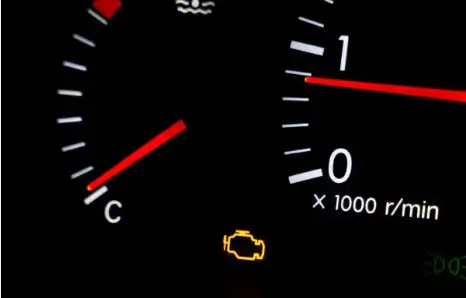
Why Does The Check Engine Light Come On?
There are numerous reasons why the check engine light may illuminate. It could be a minor issue, such as a loose gas cap, or a more serious problem with the engine or emissions system. Here are some common reasons why the check engine light comes on:
- Faulty oxygen sensor
- Loose or damaged gas cap
- Issues with the catalytic converter
- Malfunctioning mass airflow sensor
- Defective spark plugs or ignition coils
When the check engine light comes on, it is crucial to address the issue promptly. Ignoring the warning light could result in further damage to your vehicle or even cause it to fail an emissions test.
Now that we have a better understanding of what the check engine light is and why it comes on, let’s delve into the legality of removing it.
The Importance Of The Check Engine Light
Understanding the importance of the check engine light is crucial for every car owner. This small yet powerful warning light serves as a diagnostic tool and an early warning system, providing invaluable information about the health of your vehicle.
By being aware of what the check engine light signifies, you can address potential issues promptly, prevent costly damages, and ensure the safety and efficiency of your vehicle.
Diagnostic Tool
The check engine light acts as a diagnostic tool, alerting you to potential issues with various components of your vehicle. When the light illuminates, it indicates that the vehicle’s onboard computer, known as the engine control unit (ECU), has detected a problem.
To determine the specific issue, you need a diagnostic tool that can communicate with the ECU and retrieve the trouble codes associated with the illuminated check engine light.
With a diagnostic tool, you can gather valuable information about the problem, such as the nature of the issue, whether it’s related to the engine, emission system, or other vital components.
Armed with this knowledge, you can make an informed decision about how to address the problem, whether it’s by seeking professional help or attempting a repair yourself.
Early Warning System
The check engine light serves as an early warning system, indicating potential problems before they escalate into major issues. Recognizing the importance of addressing these warnings can save you from costly repairs and breakdowns later on.
As soon as the check engine light illuminates, it’s essential to take action. Ignoring the warning could lead to further damage to your vehicle and even compromise your safety on the road.
By promptly addressing the issue, you can prevent small malfunctions from causing more extensive and expensive problems. Regularly checking and responding to the check engine light can prolong the lifespan of your vehicle and maintain its optimal performance.
In conclusion, the check engine light plays a critical role in ensuring the overall health and functionality of your vehicle. It acts as a diagnostic tool, providing valuable information about potential problems, while also serving as an early warning system, alerting you to address issues before they worsen.
By understanding the importance of the check engine light and promptly addressing any illuminated warnings, you can maintain the safety, efficiency, and longevity of your vehicle.
Legal Implications
When it comes to your vehicle’s check engine light, it’s important to understand the legal implications of tampering with it. The check engine light serves as a warning system, alerting you to potential issues with your car’s performance or emissions.
However, some individuals may consider removing or bypassing the check engine light as a quick fix to avoid costly repairs.
But is it illegal to remove this crucial indicator? Let’s explore the legal consequences of tampering with the check engine light and how it can lead to violations of both state and federal laws.
Tampering With Emissions Systems
One of the main reasons why tampering with the check engine light is considered illegal is due to its connection to the emissions control system.
Modern vehicles are equipped with sophisticated emissions control systems that play a vital role in reducing air pollution and maintaining compliance with environmental regulations.
By removing or disabling the check engine light, you may inadvertently tamper with these emissions systems, potentially voiding your vehicle’s warranty and violating federal laws.
Violating State And Federal Laws
Removing the check engine light can have serious legal consequences at both the state and federal levels. While specific regulations may vary by jurisdiction, most states have laws in place that prohibit tampering with emissions systems or altering onboard diagnostic (OBD) systems.
These laws are designed to ensure that vehicles meet certain emission standards and that drivers can be alerted to potential issues that may affect their safety or the environment.
Violating these laws can result in fines, penalties, or even imprisonment, depending on the severity of the offense and the jurisdiction in which it occurs.
Moreover, federal laws, such as the Clean Air Act, also prohibit tampering with emissions control systems and devices on vehicles. The Environmental Protection Agency (EPA) and the Department of Justice (DOJ) enforce these laws, and penalties for violations can be severe, ranging from substantial fines to criminal charges.
It’s important to note that the consequences of tampering with the check engine light can extend beyond legal ramifications. Altering emissions systems can also affect your vehicle’s overall performance, fuel efficiency, and reliability.
Ultimately, removing the check engine light may seem like a quick solution, but the legal implications, potential fines, and negative impact on your vehicle’s performance make it an unwise choice.
It’s always best to address any issues indicated by the check engine light promptly and consult a qualified mechanic for proper diagnostics and repairs.
By doing so, you not only ensure compliance with the law but also safeguard the longevity and functionality of your vehicle.
Consequences Of Removing The Check Engine Light
Removing the check engine light can result in serious consequences as it is illegal. It can lead to failed inspections, voided warranties, and potential damage to your vehicle if the underlying issue goes undiagnosed.
Your vehicle’s check engine light serves as a crucial warning system that alerts you to potential issues with your car’s engine.
However, some individuals may be tempted to remove or disable this light to avoid diagnosing and addressing the underlying problem.
While the idea of ignoring or removing the check engine light may seem like a temporary solution, it can lead to severe consequences in the long run.
Let’s explore some of the most important reasons why removing the check engine light is illegal and the potential drawbacks you could face as a result.
Vehicle Performance Issues
If you decide to remove the check engine light, you may find yourself dealing with a variety of vehicle performance issues.
The light is designed to alert you to problems like faulty sensors, oxygen sensor failures, misfires, or issues with the catalytic converter – all of which can negatively impact your car’s performance.
By removing this warning system, you risk overlooking these crucial indicators, leading to reduced fuel efficiency, decreased power, and even engine damage over time.
Safety Risks
Ignoring or removing the check engine light can also pose significant safety risks to both you and other road users. The light often illuminates when there is a potential issue with essential systems like the braking or steering systems.
By disabling this warning, you may be putting yourself and others in danger without even realizing it. Continuing to drive a vehicle with underlying safety issues can increase the likelihood of accidents, loss of control, and subsequent injuries.
Increased Repair Costs
One of the main reasons why individuals might consider removing the check engine light is to avoid facing immediate repair costs. However, this strategy can ultimately backfire, leading to higher repair expenses down the line.
Without the warning light, minor issues can escalate into major, more expensive problems over time. By addressing the underlying problem promptly, as indicated by the check engine light, you can potentially save yourself from costly engine repairs or even engine replacement.
To sum up, removing the check engine light may seem like a tempting option to avoid immediate expenses or inconveniences. However, doing so puts you at risk of experiencing vehicle performance issues, compromising your safety, and facing increased repair costs.
It is essential to prioritize your safety and address any potential issues indicated by the check engine light promptly.
Legitimate Reasons To Reset The Check Engine Light
If you’ve ever had the dreaded Check Engine Light illuminate on your car’s dashboard, you know the sinking feeling it can evoke. While it’s essential to address the underlying issues causing the light to come on, there are legitimate reasons to reset the Check Engine Light after resolving those problems.
Addressing Minor Issues
One legitimate reason to reset the Check Engine Light is when it’s triggered by a minor issue that doesn’t pose an immediate threat to your vehicle’s performance or safety.
Sometimes, the light can be triggered by something as simple as a loose gas cap or a temporary hiccup in the system. By resetting the light, you can determine if the issue was indeed minor and doesn’t require further attention or repairs.
Verifying Repairs
Resetting the Check Engine Light serves as a way to verify that repairs have been completed successfully and that the issue has been resolved. After addressing the underlying problem, you can reset the light and monitor your vehicle’s performance.
If the light remains off and there are no noticeable issues, it indicates that the repairs were effective, saving you unnecessary worry and potential trips to the mechanic.
Passing Emissions Testing
Another legitimate reason to reset the Check Engine Light is to ensure your vehicle passes emissions testing. In most areas, a lit Check Engine Light automatically results in a failed emissions test.
By resetting the light after repairing the related issues, you can ensure that the light remains off during the test, increasing your chances of passing and avoiding potential consequences, such as fines or registration difficulties.
Ultimately, while resetting the Check Engine Light can be a helpful tool in certain situations, it’s essential to approach it responsibly and only reset it for legitimate reasons.
Remember to address any underlying issues promptly to prevent potential long-term damage to your vehicle.
If you’re unsure whether a reset is appropriate or need assistance with resolving the problem, consult with a qualified automotive professional.
Proper Procedures For Resetting The Check Engine Light
Resetting the check engine light should be done using proper procedures to ensure compliance with the law. It is illegal to remove the check engine light as it serves as an important diagnostic tool for identifying and addressing potential issues with your vehicle.
Using A Code Reader Or Scan Tool
If you notice the dreaded check engine light illuminating on your dashboard, don’t panic. There are proper procedures to reset it, ensuring you comply with the law while addressing any potential issues with your vehicle.
One option is to use a code reader or scan tool, which is specifically designed to interact with your car’s onboard diagnostic system.
Here’s how you can reset the check engine light using a code reader or scan tool:
- Locate the diagnostic port in your vehicle, usually found under the dashboard near the steering column. It may be covered by a plastic cap.
- Plug the code reader or scan tool into the diagnostic port.
- Turn the ignition switch to the “On” position without starting the engine.
- Follow the instructions provided by the code reader or scan tool to access the diagnostic menu.
- Select the option to clear or reset the codes.
- Wait for the code reader or scan tool to complete the process, which may take a few seconds.
- Once the codes are cleared, the check engine light should turn off. Keep in mind that if there are underlying issues with your vehicle, the light may come back on after a certain period of time.
Taking The Vehicle For A Drive Cycle
If you prefer a more hands-on approach, you can reset the check engine light by completing a drive cycle.
This involves driving your vehicle under specific conditions to allow the onboard diagnostic system to evaluate various components and systems. Here’s how you can perform a drive cycle to reset the check engine light:
- Ensure your gas tank is at least half full before starting.
- Start the engine and let it idle for about five minutes.
- Accelerate gradually and maintain a speed of around 50 to 60 miles per hour for approximately 10 minutes.
- Decelerate gradually and bring the vehicle to a complete stop.
- Allow the engine to idle for another five minutes.
- Shut off the engine and wait at least one minute before restarting.
- If the drive cycle was performed correctly, the check engine light should no longer be illuminated. However, keep in mind that certain vehicle models and diagnostic systems may have different requirements for a successful drive cycle.
Visiting A Professional Mechanic
If you’re unsure about resetting the check engine light yourself or if it keeps coming back after being reset, it’s best to seek the assistance of a professional mechanic. They have the necessary knowledge and expertise to diagnose the underlying issue causing the light to appear.
When visiting a professional mechanic, they will typically follow these steps to reset the check engine light:
- Perform a thorough inspection and diagnostic scan of your vehicle to identify the specific fault codes triggering the check engine light.
- Address the underlying issue by repairing or replacing faulty components or systems.
- Clear the codes and reset the check engine light using specialized diagnostic equipment.
- Ensure the repairs have been successful by performing additional tests and confirming that the check engine light remains off.
By visiting a professional mechanic, you can have peace of mind knowing that the check engine light has been reset properly, and any necessary repairs have been completed.
Frequently Asked Questions On Is It Illegal To Remove Check Engine Light
Can A Check Engine Light Be Removed?
No, the check engine light cannot be removed. It is a warning indicator that alerts you to potential issues with your vehicle’s engine. It is important to have the cause of the light checked and fixed to prevent further problems.
Is It Illegal To Remove A Check Engine Light Bulb?
Yes, it is illegal to remove a check engine light bulb. The check engine light is a safety feature and removing the bulb is against the law.
Can You Cancel A Check Engine Light?
Yes, you can cancel a check engine light, but it’s important to diagnose and fix the underlying issue causing the light to come on. Simply disconnecting the battery won’t fix the problem, as the light will likely reappear. Get your vehicle checked by a professional to address the root cause.
How Do I Turn Off My Check Engine Light?
To turn off your check engine light, you need to fix the underlying issue causing it. Take your vehicle to a mechanic who can diagnose and repair the problem. Once the issue is resolved, the mechanic will use a diagnostic tool to reset the check engine light.
Don’t try to guess or ignore the problem, as it could lead to further damage.
Conclusion
Removing the check engine light might seem tempting, but it is important to remember that it is illegal in most cases. Not only can it lead to costly repairs in the long run, but it can also jeopardize your safety and the safety of others on the road.
It is always best to address the underlying issues causing the light to come on rather than simply turning it off. By doing so, you can ensure the proper functioning of your vehicle and maintain compliance with the law.

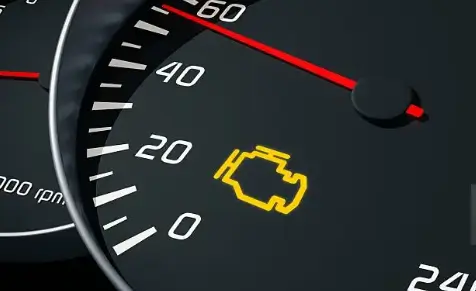
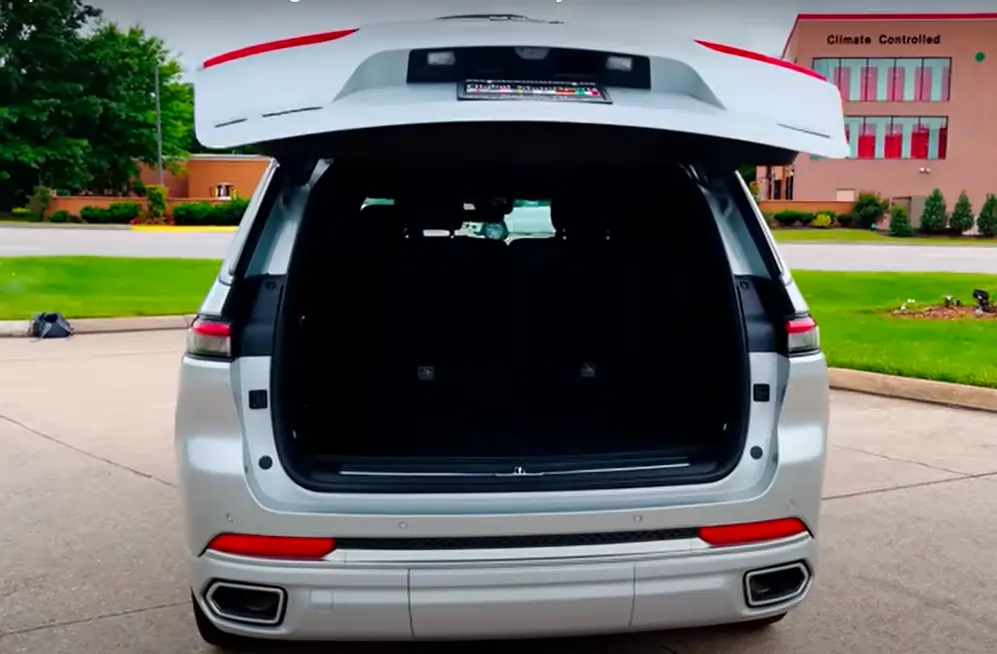





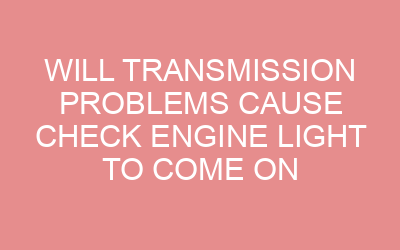

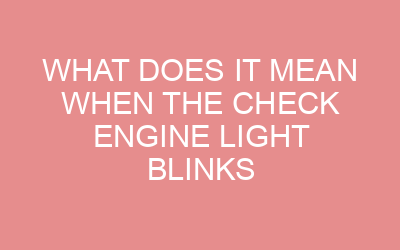



Leave a Reply